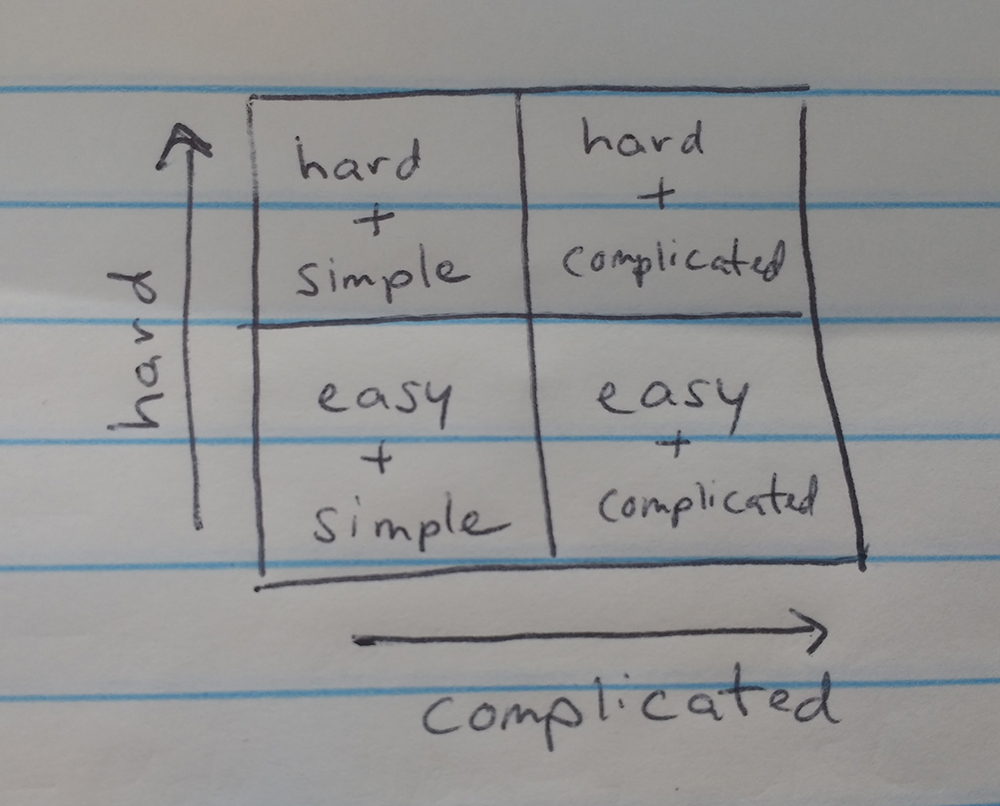I’m watching college basketball last Saturday. Clark Kellogg, who’s been doing games for CBS for 20+ years now, is on the call. It’s the Missouri-Florida game, and Mizzou’s on offense. There’s a mismatch: One of the Florida guards is matched up in the post against a Missouri player who has seven inches and probably 70 lbs. on him.
The ball goes into the post, but the Florida defender doesn’t give an inch. So the Mizzou forward kicks the ball out, then reestablishes position on the inside. He gets the ball back, turns, and hits the shot.
“It’s not always easy,” Kellogg says, the replay playing over his commentary, “but it certainly isn’t complicated.”
I’d never heard anyone say something like that before — it really clicked for me. So I paused the game, grabbed a notebook, and drew this up:

Most of the things I work on fall into one of the two categories on the left: Easy + simple or Hard + simple:
Easy + simple — This is the category for things like A/B tests on a subject line, or small tweaks to a newsletter.
Hard + simple — This is for the projects that don’t seem like they should be all that hard — for instance, changing a CTA on our website — but might require a handful of engineers and a complicated series of steps to execute.
A smaller percentage of work falls into the two categories on the right:
Hard + complicated — These are the big picture projects that involve multiple teams and ambitious goals or testing. If we’re launching a new newsletter; moving our email operations onto a new piece of technology; or attempting to shift to a new roadmap, we’re probably operating in this quadrant.
Easy + complicated — There aren’t a lot of things that fall under this heading, but here’s one: Having a really tough conversation with a co-worker, or attempting to get buy-in from your team. Those things seem simple on paper, but once you attempt to factor in all of the relationships, opinions, and egos on a team, things can get complicated quickly.
As your grow in a role, you’ll find that your work tends to shift from the left half of the graph to the right half. You’ll take on bigger projects, with larger goals and more on the line. But there will always be left-half types of projects to maintain. The challenge for all of us: Figuring out ways to handle the little things quickly so that you can stay focused on the big picture.
